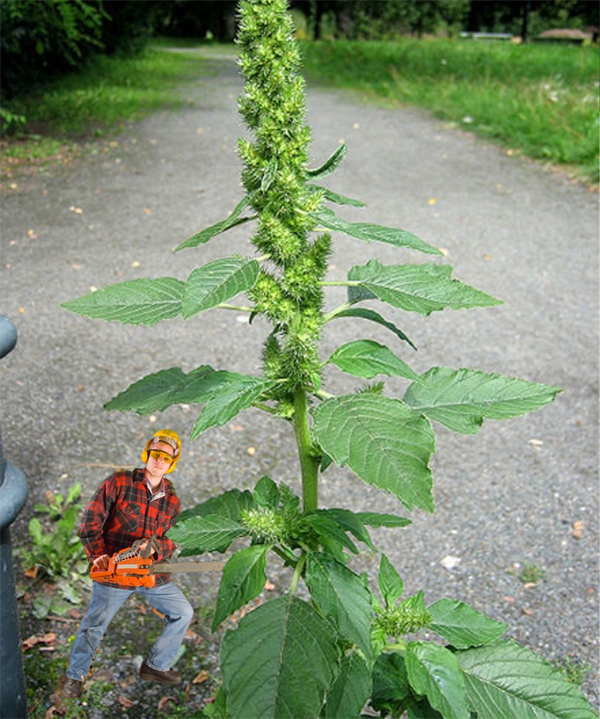Pigweed can be controlled easily before it germinates or soon after when it is less than 2” in diameter or less. If it is left uncontrolled, it can grow 3 or 4 feet and control becomes more difficult. Weeds have many ways to survive, and pigweed has most of them. 1) it has very small seeds that can blow in wind and float in water, 2) It is prolific and produces hundreds of thousands of seeds in one season, 3) There are 5 species of pigweed here and they hybridize. This genetic variability allows it to develop herbicide resistance, 4) It does not have a tap root but has many fibrous roots that help it tolerate heat and drought,4) It grows and produces seed rapidly, 5) It regrows rapidly when it is cut off near the surface. It’s weakness is that it is small seeded and can be controlled before it emerges with preemergence herbicides. It does not survive through the winter and herbicides should be applied in February or march. Some preemergence herbicides that work on pigweed are: Prowl,Treflan,Chateau,Prefar, and others. Postemergence contact herbicides are best when the weeds are less than 2” or less in diameter. These are not systemic and good coverage is essential. These include Gramoxone, Sharpen, Liberty/Rely and others. After the pigweed gets to a foot or more in height, contact herbicides will be a waste of time and money. At this point it is time to bring out the big guns. Glyphosate is variable. Pigweed is the only weed in Arizona that has been documented to be resistant to glyphosate. This is known in central and southeastern Arizona but may have spread to other parts of the state. It is not reliable on big pigweed. The plant growth regulator herbicides work well even on big pigweed. These include 2,4-DB,2,4-D, Dicamba , Triclopyr (Garlon) and others. These are volatile, however. A few other postemergence herbicides that will be effective but may nor be selective are Lorox, Velpar and Atrazine.
PigWeed Tree Control





